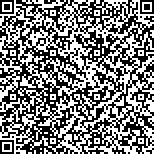下载中心
优秀审稿专家
优秀论文
相关链接
摘要

地表发射率是地表温度反演的重要输入参数,为了解决现有地表发射率估算方法在裸露地表精度较差的问题,本文基于最新的ASTER全球地表发射率产品(ASTER GED)和基于植被覆盖度的方法(VCM),提出了一个改进的地表发射率估算方法。首先,利用ASTER GED产品求解裸土发射率,然后,利用ASTER波谱库中的植被发射率和植被覆盖度结合VCM方法计算地表发射率。利用张掖地区2012年11景ASTER TES算法反演的地表发射率产品和实测地表发射率数据进行了验证,同时利用一景Landsat 8 TIRS数据分析了对地表温度反演精度的影响。结果表明该方法估算的地表发射率整体精度较高,可以有效改进裸露地表的发射率估算精度,用于支持利用多种热红外传感器数据生产高精度的地表温度产品。
Land Surface Emissivity (LSE) is a key parameter for determining land surface temperature because it depends on the features of the surface composition, is related to surface roughness, dielectric constant, and water content, and changes with vegetation fraction. Auxiliary data are used to calculate emissivity through single-channel algorithms, e.g., classification-based, NDVI threshold, and vegetation cover methods. However, these techniques present several limitations. For example, the classification-based method LSE is insensitive to land cover change on barren surfaces.Moreover, MODIS C5 LST products underestimate LST in an arid area of Northwest China because of the over estimate of LSE. Therefore, the precision of land surface emissivity in arid and semi-arid areas must be improved before the retrieval of land surface temperature. In this study, we developed a method for improving the accuracy of land surface emissivity for barren surface by using the latest ASTER Global Emissivity Database (GED) and Vegetation Cover Method (VCM). ASTER GED was used to determine bare soil emissivity. The spectra of soil in ASTER spectral library were selected to fill small gaps of bare soil emissivity according to different land cover types. The vegetation emissivity of ASTER spectral library and Fractional Vegetation Cover (FVC) product were used in VCM method estimate land surface emissivity. This method can not only maintain the high precision of ASTER GED for barren surface but can also effectively characterize seasonal characteristics of vegetation emissivity over time; hence, the proposed technique an provide reliable input data for retrieval of land surface temperature. This method was evaluated with 11 scenes of ASTER land surface emissivity products of Zhangye region in 2012 and in situe missivity measurements. Results show that the biases of bands 10-12 are within 0.015 and RMSEs are less than 0.03.The biases of bands 13 and 14 are less than 0.005 and RMSEs are less than 0.01 compared with those in ASTER LSE products. The retrieved emissivity is close to the in situ measured emissivity with minor errors. One scene of Landsat 8 TIRS data was also used to analyze the influence of the proposed method on the accuracy of land surface temperature retrieval. The results show that the method can obtain more reasonable and accurate land surface emissivity than NDVI threshold method, especially for barren surface. Hence, the method can be used to produce high-precision land surface temperature products for other thermal infrared sensors, e.g., Landsat 8 TIRS, HJ-1B IRS, and FY-3 MERSI. In this study, an improved method for estimating land surface emissivity from ASTER GED products and VCM was proposed to improve the accuracy of land surface emissivity for barren surfaces. This method was evaluated with ASTER LSE products and in situ emissivity measurements. One scene of Landsat 8 TIRS data was also used to analyze the influence of this method on the accuracy of land surface temperature retrieval. The results in Zhangye city show that the proposed method can obtain reasonable and accurate land surface emissivity. However, further analysis is required for other areas. Although ASTER GED is relatively stable on bare surfaces, Hulley et al. (2010) indicated that the soil moisture at 11 and 12 micron can increase LSE by up to 0.03 times. In this regard, the effects of soil moisture on land surface emissivity must be considered in future research.

